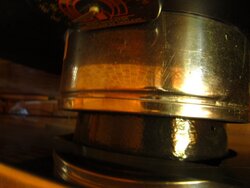Hi,
I am installing a Hearthstone Phoenix that will be vented out through an exterior wall (I realize that this is not ideal) and then up about 15' through a class A chimney. My question is, which type of class A chimney will perform best in terms of draft and creosote build up on the exterior? Double or Triple wall?
I am considering using the AirJet chimney system, but want to make sure that a Triple wall chimney with no insulation won't cause increased creosote build up. Does anyone have experience with this pipe?
http://www.continentalindustries.com/files/downloads/AJ-2100Brochure.pdf
I am installing a Hearthstone Phoenix that will be vented out through an exterior wall (I realize that this is not ideal) and then up about 15' through a class A chimney. My question is, which type of class A chimney will perform best in terms of draft and creosote build up on the exterior? Double or Triple wall?
I am considering using the AirJet chimney system, but want to make sure that a Triple wall chimney with no insulation won't cause increased creosote build up. Does anyone have experience with this pipe?
http://www.continentalindustries.com/files/downloads/AJ-2100Brochure.pdf



 . I'm glad to hear it works well for you!
. I'm glad to hear it works well for you!